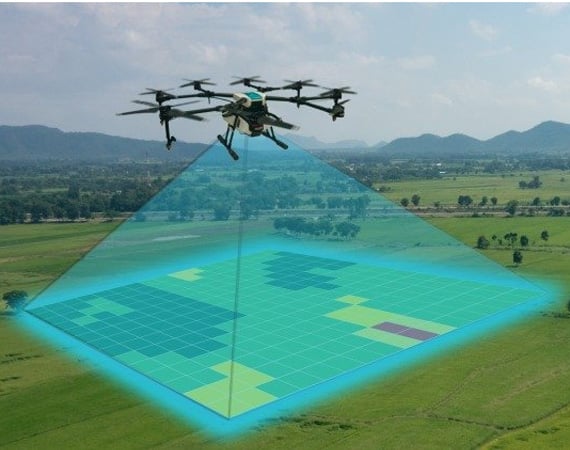In recent years, the construction sector has witnessed the technological renaissance, in addition to at the lead of this alteration is drone surveying. This innovative technique is redefining conventional surveying methods, giving unparalleled accuracy in addition to efficiency that happen to be quickly becoming important inside the fast-paced entire world of construction. By simply harnessing the potency of colossal technology, construction specialists can now gather critical data in addition to perform site checks in a fraction of the time it would typically take.
Even as we delve into the various methods drone surveying is definitely revolutionizing construction, we'll explore the advantages it brings, through enhancing project managing to improving land surveys. This extensive overview will supply both industry experts and newcomers together with the knowledge they have to understand the technological innovation behind drone surveying as well as its applications around different sectors. Together with drones proving in order to be an excellent tool, it is crystal clear that their influence on the construction panorama is just just starting.
Changing Construction with Drone Technology
The development industry is undergoing a deep transformation with the integration of drone technology. Drones offer unparalleled efficiency found in surveying, allowing for quick and precise files collection from several angles and elevations. This capability substantially reduces enough time needed for site assessments, making it feasible to complete projects on schedule and within budget. The particular use of drones helps construction teams maintain a clear overview of project advancement, enhancing coordination and decision-making across several phases of structure.
Found in addition to speed, drone surveying substantially improves accuracy. Traditional surveying methods generally involve extensive manpower and intricate calculations, leading to possible human errors. Drones furnished with advanced sensors and imaging technology provide high-resolution high imagery and precise measurements that are crucial for preparing and executing structure projects. This higher level of reliability helps mitigate risks associated with land surveys and ensures that building ideas align closely together with actual site problems.
Furthermore, the incorporation regarding drones into construction workflows has substantial economic implications. Simply by https://www.dreamlandsdesign.com/why-realtors-choosing-drone-services-survey-their-land/ surveying operations, drones reduce work costs and lessen the likelihood associated with costly mistakes. These types of savings can be particularly beneficial for considerable projects where perhaps minor discrepancies may lead to significant setbacks. As the industry continually adopt drone technology, many of us can expect to see a change toward more effective project management techniques, ultimately leading in order to smarter construction remedies that leverage the particular full potential involving aerial data.

Key Apps and Benefits of Drone Surveying
Drone surveying has emerged as a game-changer found in various industries, giving unique applications that enhance efficiency in addition to data accuracy. One of many uses of drones is in acquire surveys, where these people capture high-resolution high imagery and produce precise topographical routes. This innovation substantially reduces time required for land checks and provides in depth insights for organizing and development. Additionally, drone surveying is usually invaluable in structure project management, as it allows for real-time monitoring of web-site progress, making sure projects stay on schedule and within spending budget.
The benefits of using drones expand beyond speed and precision; they furthermore help with improved safety on construction websites. Traditional surveying methods often require employees to traverse unsafe terrain or operate in challenging surroundings. Drones eliminate typically the need for personnel to physically obtain these risky places, dramatically reducing the opportunity of accidents and traumas. Moreover, the ability to quickly conduct aerial inspections allows teams to distinguish issues early, enabling regular interventions that could prevent costly delays.
Another substantial advantage of drone surveying is its scalability and cost effectiveness. Drones can protect large areas within a fraction of the time it would have traditional surveying clubs, leading to decreased labor costs and quicker project turn-around. Companies can power drone technology regarding various applications, which includes environmental monitoring plus infrastructure inspections, so that it is a versatile device for a range associated with industries. As drone surveying technology proceeds to evolve, its applications will grow, unlocking new efficiencies and innovative remedies for construction tasks and beyond.
Future Tendencies in Drone Surveying
As technology continues to advance, drone surveying is expected to be able to become more useful and accessible. The integration of unnatural intelligence and device learning into drone operations will permit automated data research and real-time control capabilities. This move will allow surveyors to concentrate more upon decision-making and preparing rather than on time-consuming data series and interpretation operations. Additionally, innovations inside drone hardware, for instance improved battery existence and payload volumes, will enhance the capabilities of drones in surveying apps.
An additional significant trend is the increasing using drones for ecological monitoring and durability efforts. With the growing awareness regarding climate change plus the need intended for responsible land managing, drones equipped using advanced sensors can play a crucial role in supervising ecosystems, assessing environment impacts, and assisting conservation efforts. This kind of will not merely improve the accuracy of environmental assessments and also support the building industry in adhering to regulatory needs and reducing their ecological footprint.
Collaboration in between companies in the design and drone technologies sectors will more than likely advance new applications plus services. Partnerships that will leverage drone surveying alongside other technology, such as geographic information systems (GIS) and augmented actuality (AR), will supply integrated solutions with regard to project management in addition to development. As these collaborations expand, they will drive advancement, streamline workflows, and even ultimately enhance the particular efficiency of structure projects, reaffirming the particular indispensable role regarding drone surveying throughout the future from the industry.
